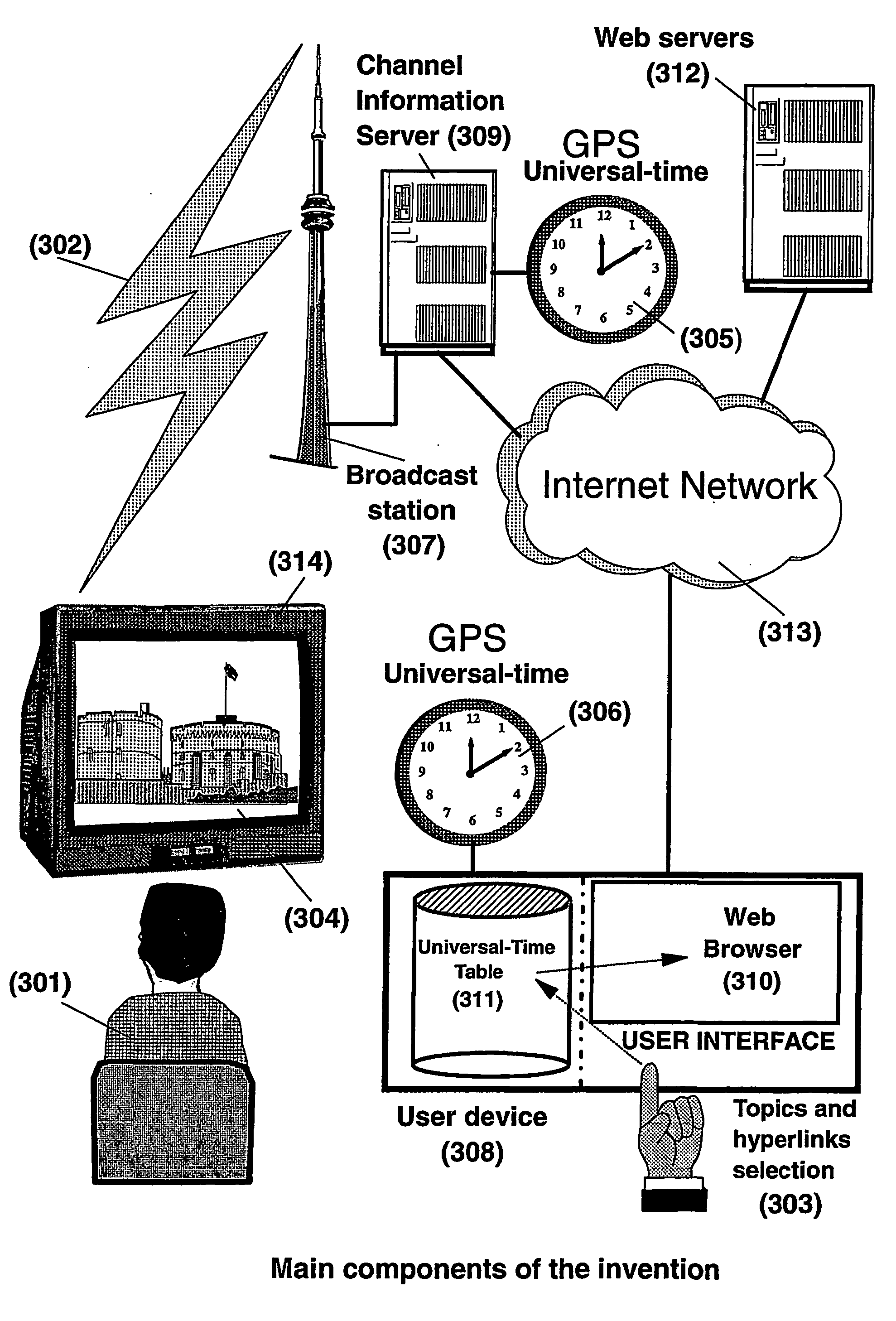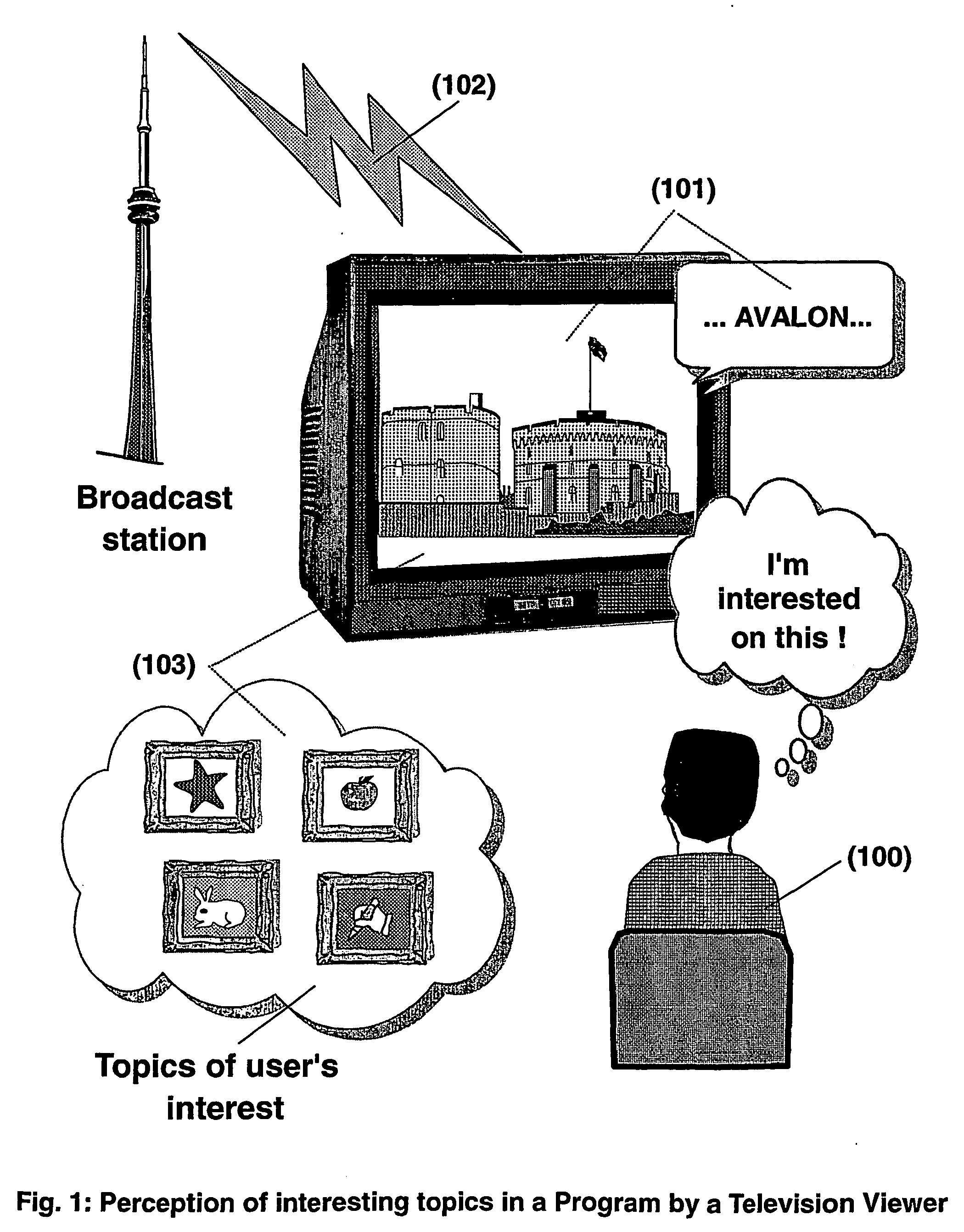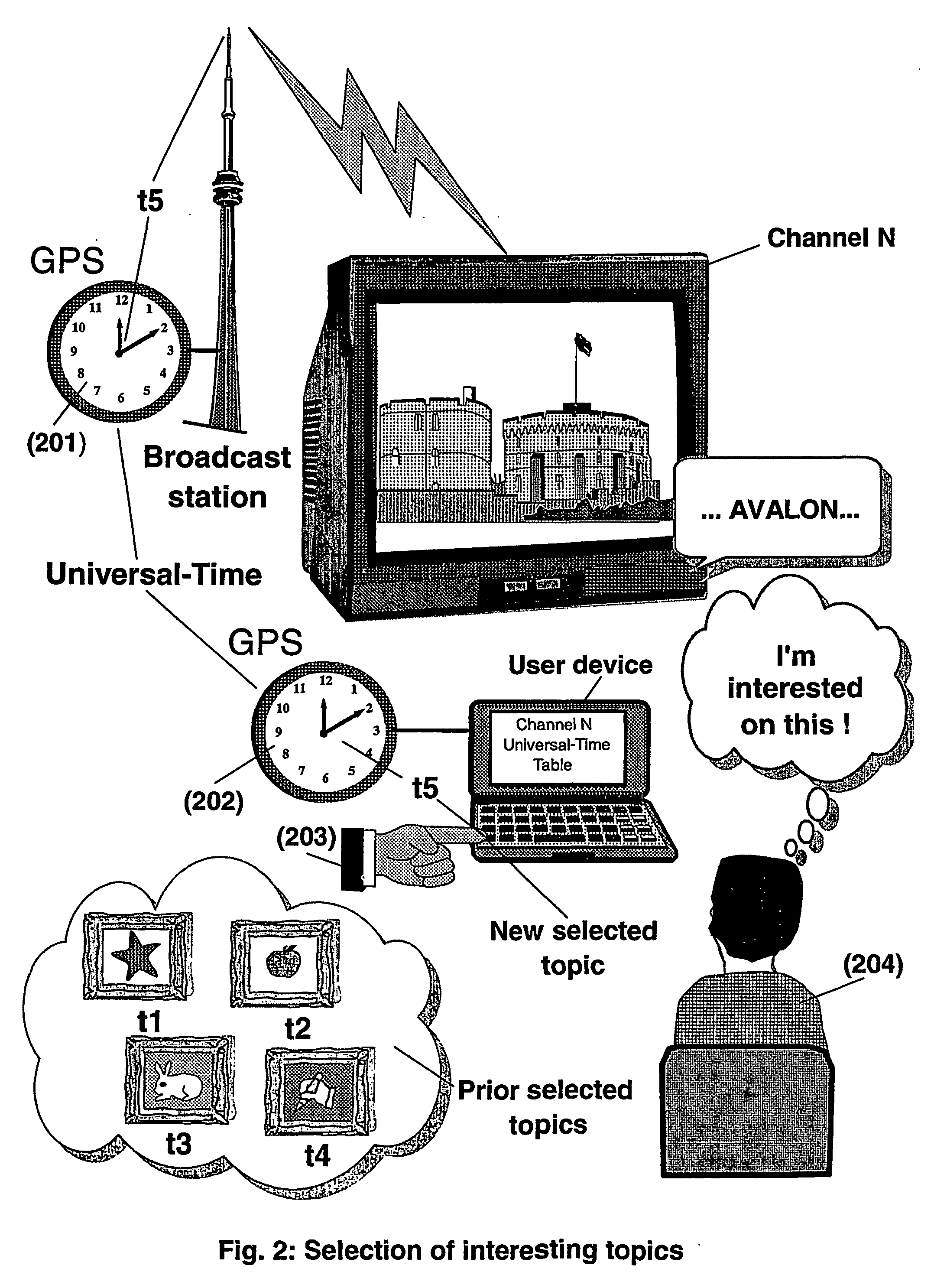System and method for enhancing broadcast programs with information on the world wide web
- Summary
- Abstract
- Description
- Claims
- Application Information
AI Technical Summary
Benefits of technology
Problems solved by technology
Method used
Image
Examples
Embodiment Construction
[0084] As shown in FIGS. 1 and 2, the present invention discloses a system and a method for enabling a radio auditor or a television viewer (100) to access additional information (103) related to a program (101) retransmitted from a radio or television broadcasting station (102). The principle is to synchronize the local time of transmitters (201) and receivers (202) according to a same universal time, such as for example, the Universal Time Co-ordinated (UTC) or the Global Positioning System (GPS) time.
[0085] As shown in FIG. 3, the preferred embodiment of the invention provides a system and a method for enabling a person (301) receiving a broadcast program (302), to select (303) a plurality of topics (304) drawing his or her attention and for immediately, or at a later time, accessing additional information related to these topics from the Word Wide Web. The flow of information that is transmitted and received (302) is synchronized according to an universal time (305) (306) such a...
PUM
 Login to View More
Login to View More Abstract
Description
Claims
Application Information
 Login to View More
Login to View More - R&D
- Intellectual Property
- Life Sciences
- Materials
- Tech Scout
- Unparalleled Data Quality
- Higher Quality Content
- 60% Fewer Hallucinations
Browse by: Latest US Patents, China's latest patents, Technical Efficacy Thesaurus, Application Domain, Technology Topic, Popular Technical Reports.
© 2025 PatSnap. All rights reserved.Legal|Privacy policy|Modern Slavery Act Transparency Statement|Sitemap|About US| Contact US: help@patsnap.com



